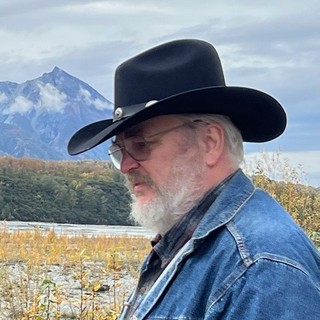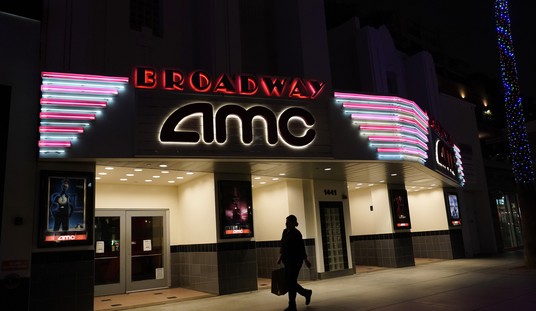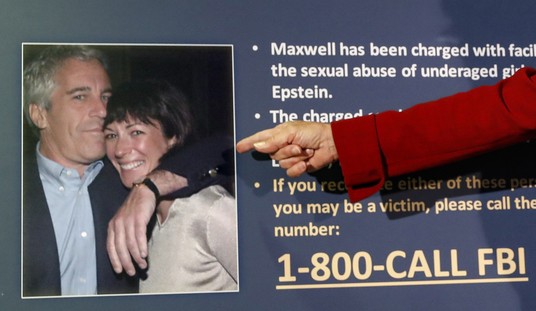When atomic weapons were still a pretty new thing, there was a tendency to think of them as just another weapon. A bigger, deadlier one, of course, but just a bigger, hotter, more radiation-emitting bomb. That changed, of course, over the years, fueled in no small part by the development of newer, bigger nukes, fusion rather than fission bombs with yields that made the Hiroshima and Nagasaki devices look like firecrackers.
In those early years, though, there was also another odd tendency: Thinking that nuclear weapons could be used for "peaceful purposes." No, I'm not talking about nuclear reactors for energy: I'm talking about actual by-gosh atomic bombs, being used in huge engineering projects. Like building a harbor. In Alaska.
Yes, the United States government was seriously thinking about nuking Alaska. They called it "Project Chariot."
Carving an artificial harbor out of Alaska’s remote northwest coast would take just an instant, claimed the Atomic Energy Commission (AEC) in 1958.
They’d just bury six atomic bombs under the earth, where Cape Thompson met the Chukchi Sea, then detonate them in a daisy chain nearly eight times more powerful than those dropped on Nagasaki and Hiroshima combined. Done at the right time of year, early spring when snow cover protected plants and most birds had absconded for warmer climes, there would be minimal fallout. The local Iñupiat community’s hunting season would be interrupted for only a few weeks; a few months, at most.
In exchange for the small amount of radiation given off by the “cleanest bombs available,” the region would gain a new way to extract natural resources; the local economy would flourish. But Project Chariot—the first to be seriously considered as part of the AEC’s wider Project Plowshare, which sought to harness nuclear power for good instead of evil—wasn’t just about Alaska or its resources.
That's a pretty remote part of Alaska, and in 1958 was even more sparsely populated than it is now. So it may have been as good a place as any, the AEC might have thought, to test this concept: Bury six nukes, torch them off, and BOOM, a new harbor. But how about the radiation? Ground bursts are nasty; they kick a lot of irradiated dust and dirt into the air, and this irradiated dust and dirt is carried downwind and later falls back to earth; that's what we call "fallout." Turns out the AEC had bent a few brain cells in that direction.
In Alaska, Project Chariot was an experiment to determine whether nuclear power could be as useful in real-life engineering as it appeared to be on paper. Detonating the explosives underground would “reduce the usually heavy fallout of surface or near-surface blasts,” according to a September 1958 Popular Science article on the project.
The AEC expected the majority of the radiation produced to be carried 200 miles downwind. But, just in case they’d miscalculated, they intentionally chose a location “where there weren’t a lot of people around,” says Kaufman. The fact that those living closest to the proposed harbor were small communities of Indigenous people “played a huge role.”
The locals were members of the Iñupiat Alaska Natives, and they tend to be stubborn folk. They weren't happy about the idea of the American government coming in and nuking their ancestral homelands.
Read More: SADM: That Time the Green Berets Jumped From Airplanes With Atomic Bombs
Rodent Mayhem: That Time a US Nuclear Missile Base Was Conquered by Squirrels
And ruin is precisely what would have happened. This was before the great Alaska oil fields started providing jobs in the far north; while President Harding had, in 1923, designated "Naval Petroleum Reserve No. 4", later the National Petroleum Reserve-Alaska, production didn't really get going on anything like the scale of today until the Alaska Pipeline was completed in 1977.
The Iñupiat were concerned about their traditional rights and practices, and they were right not to want to have nukes blowing up part of their ancestral hunting and fishing grounds. So, the AEC looked into their worries:
The Iñupiat’s biggest concern was the impact Project Chariot would have on their livelihood, primarily hunting caribou and seal, fishing, and collecting bird eggs. So fierce was their resistance that the AEC agreed to delay the project by two years, from 1960 to 1962, in order to conduct environmental tests that would prove what project managers had been trying to convince community members—that Chariot’s potential benefits outweighed its minimal risks.
The studies did anything but. Even if the bombs emitted only small amounts of radiation, there was no way to control which direction the fallout would travel. A year’s worth of data confirmed that if radioactivity from the harbor’s blasts was blown inward, they’d be forced to restrict access to essential subsistence hunting and nesting grounds, and groundwater would be severely contaminated.
The end result? The AEC told Americans in general and the Iñupiat in particular, "You know what, never mind, this wasn't such a hot idea."
Thus ended the United States' flirtation with using nuclear weapons as a civil engineering tool. The Iñupiat kept their traditional hunting and fishing grounds non-radioactive, and the United States realized the value of more traditional means of conducting major infrastructure projects of this nature (dynamite, and plenty of it). Today, of course, we correctly view nuclear weapons as potentially civilization-ending, catastrophic things to be avoided at all costs. So it's kind of interesting to look back at a time when their use was considered for a much broader range of applications.
Speaking as an Alaskan, I'm just as glad they waved off on this project.














